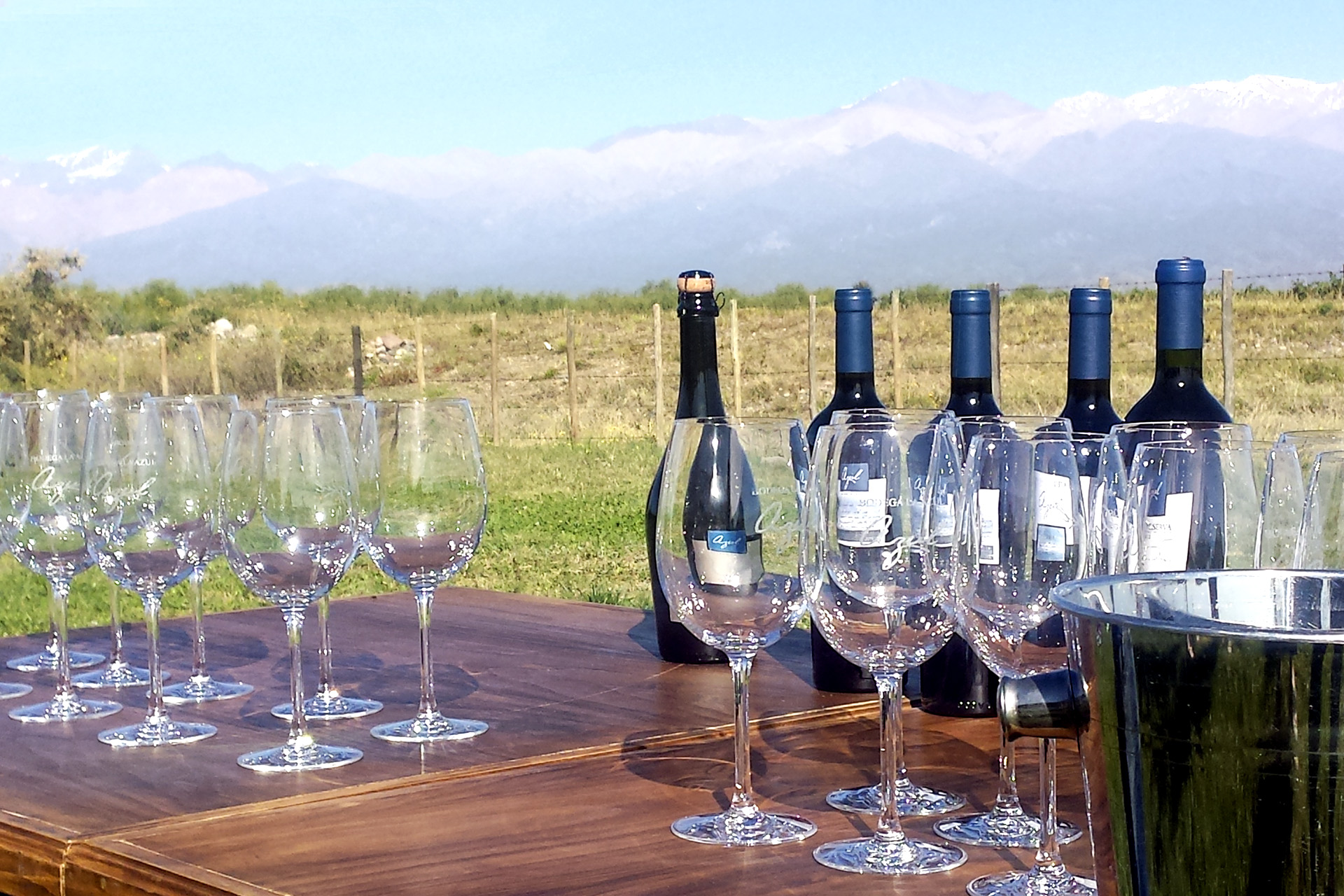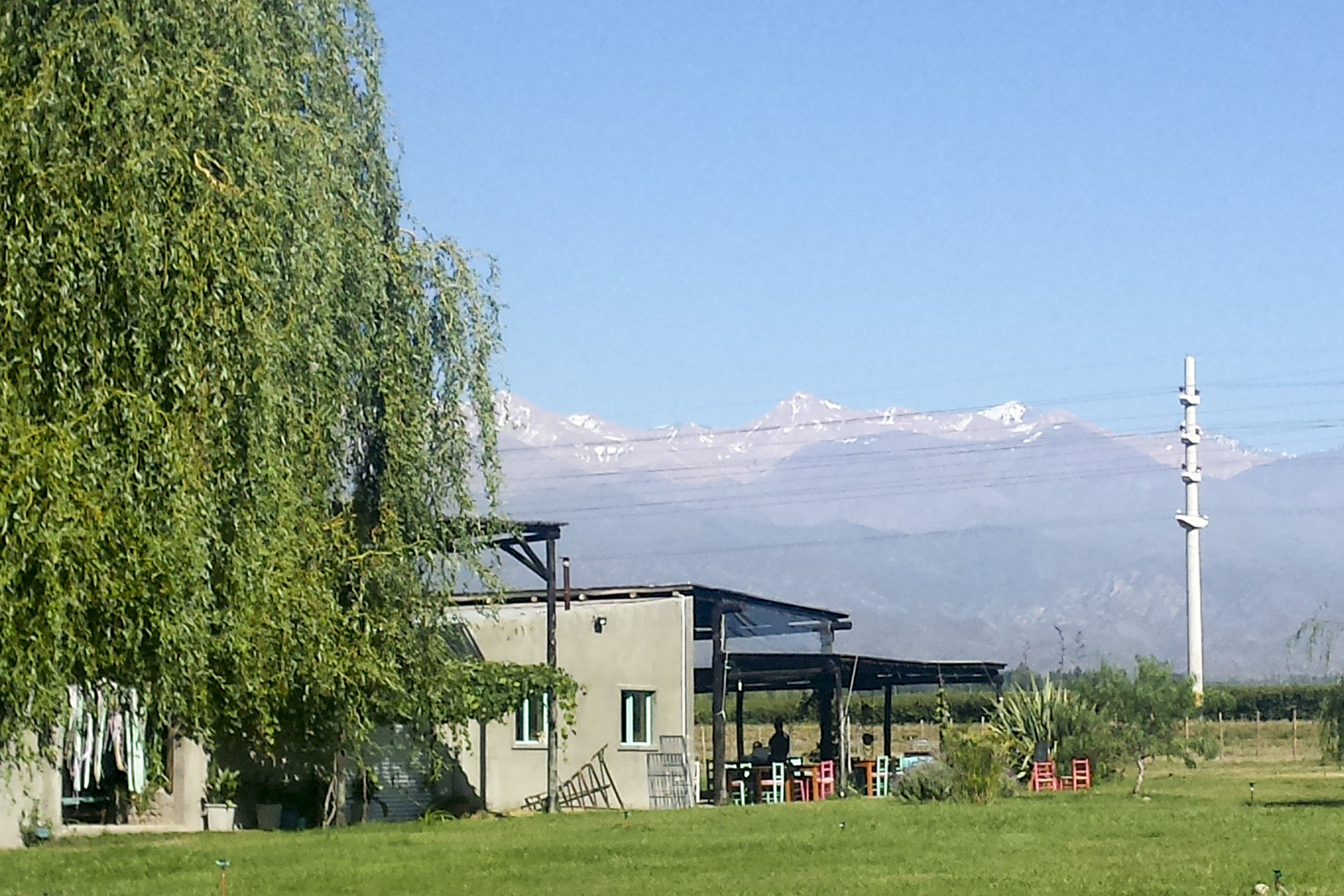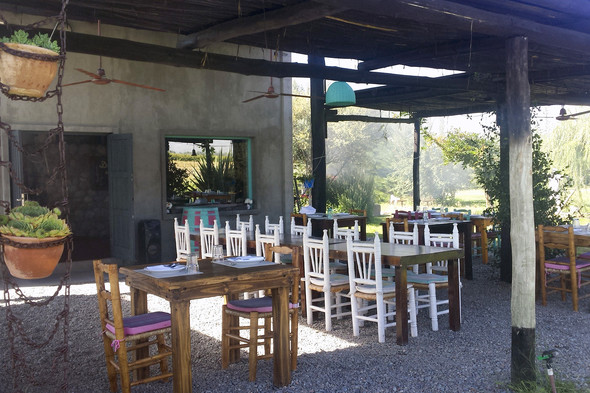Bodega La Azul counts as the smallest winery in Mendoza. A family business with small artisan production and a high quality range, the family had already owned the property for years when the Uco Valley was primarily fields. At that time, the region was known for its fruit – apples, pears, strawberries, peaches and cherries – and the family, originally from Lebanon, was one of the biggest fruit producers in the area. Michaele’s grandfather wanted to divide up his land amongst his four sons. In order to avoid arguments, he took a jar with different colour papers in it, and the sons were awarded the land that corresponded with their colour paper.
Alessandro, Michaele’s father, drew the blue one. His wife, Shirley, came up with the idea of planting vines and building a winery, just for them. They decided to call the winery ‘La Azul’ in deference to the blue slip of paper. They began by producing wines only for the family, just as the country was returning to democracy. At a time when mostly bulk wines were produced in Argentina, they decided to produce better quality wines and took advice from French agronomists and winemakers; Michel Rolland managed their first vinification. One of the first boutique wineries in the area, they did no marketing, but quickly became known for the quality of their wines. However, they didn’t want to expand, just stay the same as they were. They even have an Italian basket press which they still use to press all their wine.

Their annual production, of which about 50% is exported, is just 70,000 litres of Malbec, Cabernet Sauvignon, Sauvignon Blanc and two types of sparkling wine – they make the base wine but the second fermentation is carried out by another company. The sparkling is exclusive to the winery and restaurant; only 1200 bottles of Extra Brut and Brut Rosé are produced. Interestingly, they also craft bright, fruity Malbec and Cabernet Sauvignon varietals which have seen no oak at all, so the freshness and purity of the fruit can really shine through. These are bottled and sold young and full of ripe, crunchy fruit. In keeping with the blue theme, the young varietals are closed with blue synthetic corks, whereas the top reserve wines are closed with natural cork.
Michaele’s grandfather was also a poet, and the labels on these varietals feature a poem, a love letter, written by him to his wife whom he’d left behind in Argentina while on a trip to Spain in 1957.
The area here is very special, as there are no pre-Andes, just flat land and then, immediately, the mountains. Michaele pointed out the pool, which all properties around here have, a kind of reservoir for the water received when you have the right of water from the system. You are not entitled to water every day, especially in summer. The winery, born in 2003, stares at swathes of vines, some more than 50 years old and some new plantings, with the snow-capped Andes in the background. This land, 1200m above sea level is called Agua Amarga in Tupungato.

Down a track to the rear of the winery is the idyllic hotel, Finca La Azul, run by Shirley, the creator of the winery. She has a degree in sustainable agriculture, so everything at the hotel is eco and recyclable, and, as Shirley points out, it was all built with Argentine money.
Shirley said she explained to her sons that the land doesn’t belong to anyone; it’s for the next generations. ‘We are blessed with the land and climate; I don’t get involved with politics.’






